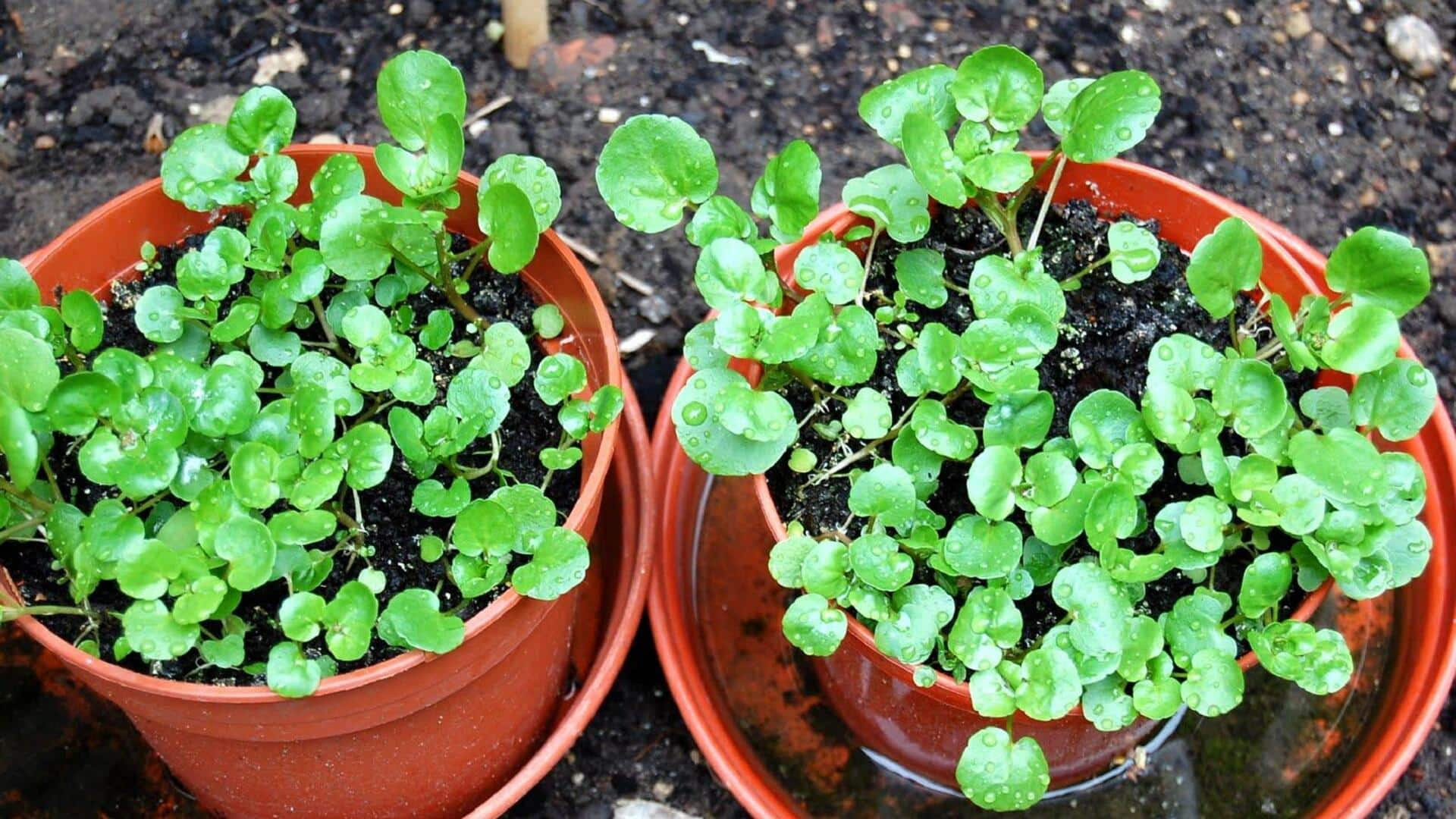
How to grow watercress at home
What's the story
Growing fresh watercress indoors throughout the year is a practical way of enjoying this nutritious leafy green without resorting to store-bought ones. Since watercress thrives in a moist environment, it makes for a perfect indoor plant. With the right conditions and care, you can have a continuous supply of fresh watercress at your fingertips. Here's how to grow watercress indoors.
Container selection
Choosing the right container
Selecting the right container is key to growing watercress indoors. Choose shallow containers with good drainage holes so that the plant doesn't get waterlogged. A depth of around four inches should suffice as watercress has shallow roots. Make sure the container retains enough moisture while excess water drains away easily. Placing trays or saucers below pots can catch overflow and keep humidity around plants.
Light requirements
Ensuring proper lighting conditions
Watercress needs a lot of light to grow properly. Keep your containers close to a south-facing window so that they can get bright, indirect sunlight for a minimum of six hours every day. If natural light falls short, opt for fluorescent or LED grow lights, placed approximately 12 inches above the plants. These lights should run for 12-16 hours daily to simulate natural sunlight and encourage healthy growth.
Moisture management
Maintaining ideal moisture levels
Maintaining consistent moisture levels is crucial when growing watercress indoors. Keep the soil consistently damp, but not soggy, by watering regularly, and misting occasionally if necessary. Using a spray bottle can help maintain the humidity around the leaves without overwatering them directly. Be careful not to let the soil dry out completely, as this may hinder plant growth and reduce yield.
Harvesting tips
Regular harvesting techniques
Regular harvesting promotes new growth and keeps a steady supply of fresh leaves coming all year long. Start harvesting when plants are about six inches tall by snipping off individual stems just above their base with scissors or pruning shears. This promotes bushier growth patterns over time, while avoiding overcrowding within containers. Such overcrowding could lead towards stunted development due to lack of space and nutrients competition among neighboring shoots.